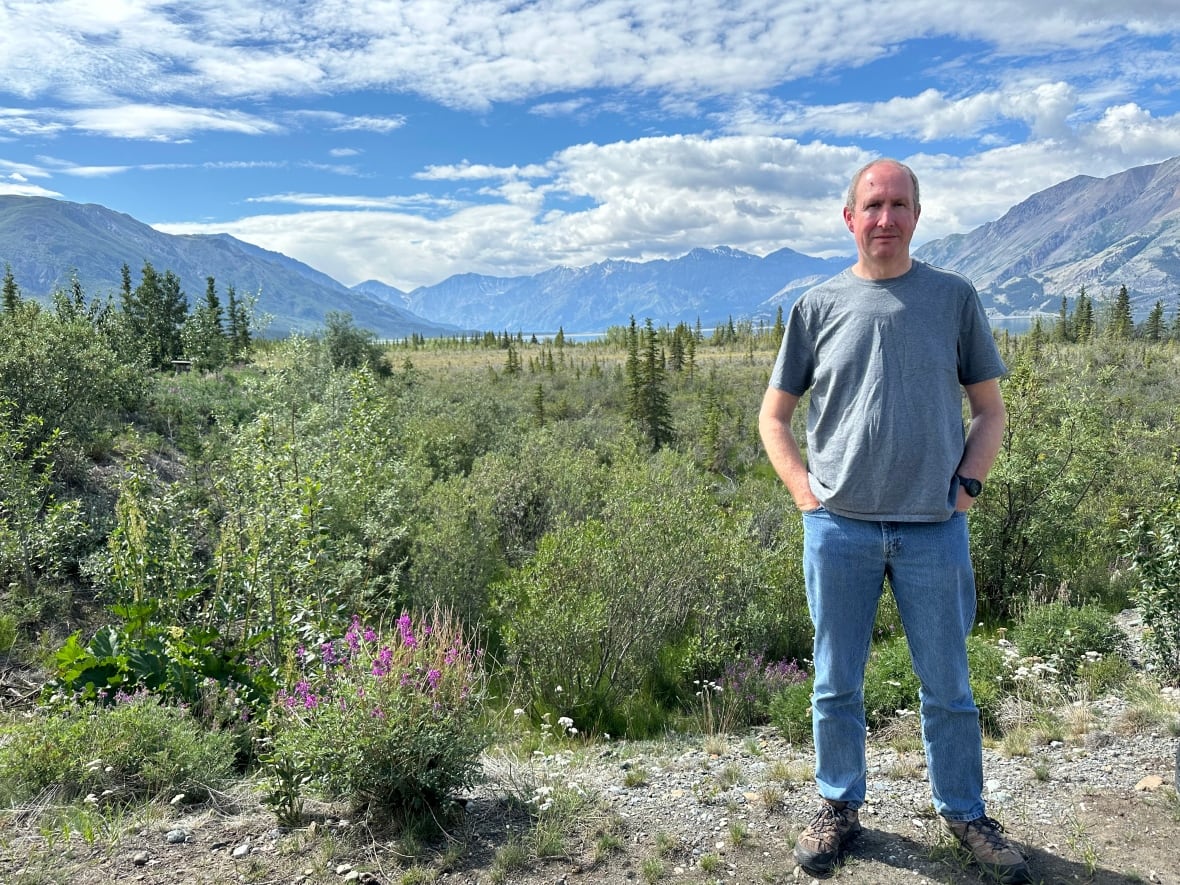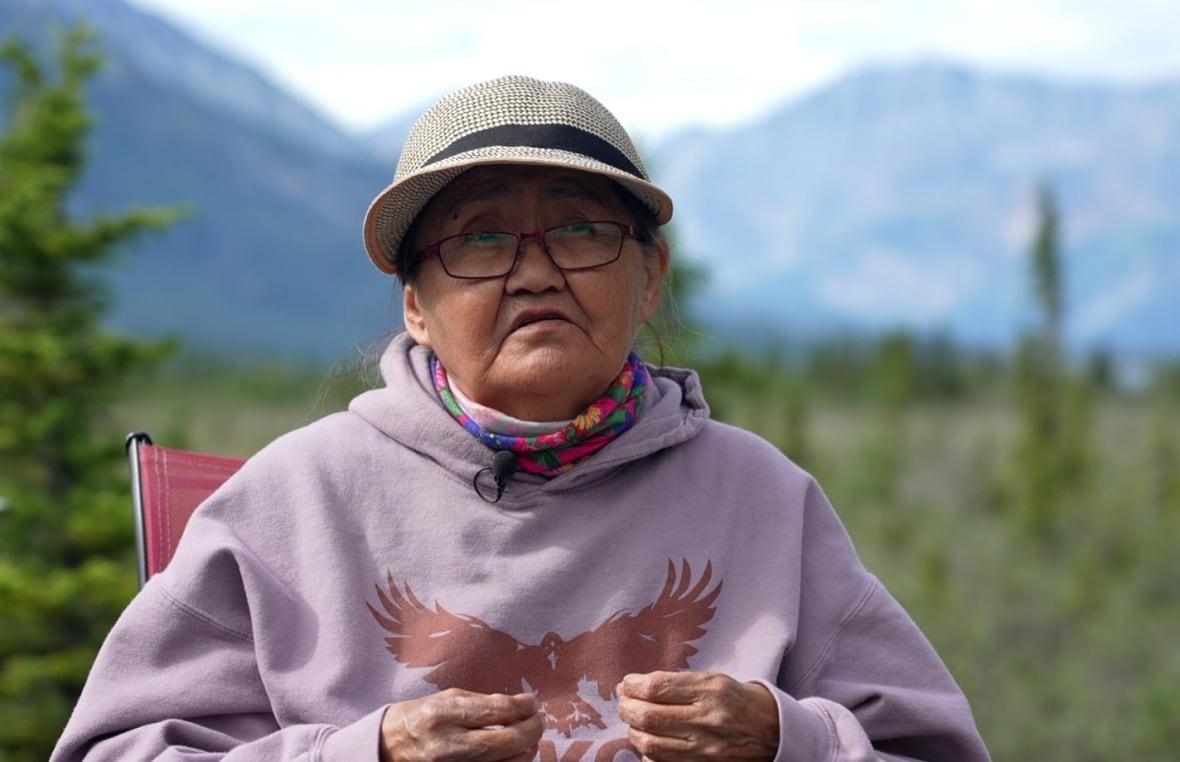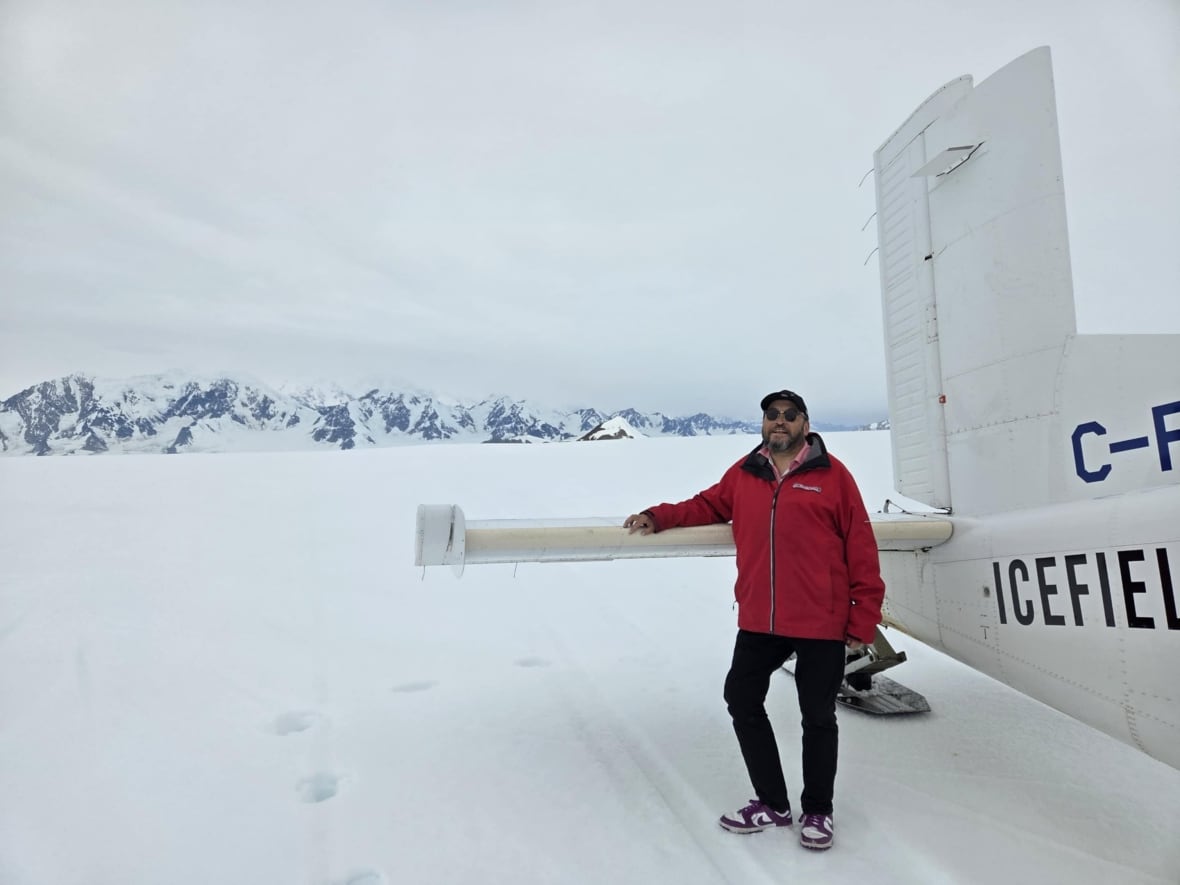As Canada's thickest glaciers melt, Yukon First Nations wonder what will happen if they disappear
Researchers visited glaciers in the St. Elias range this month to better understand how they are changing
Ron Chambers understands the power of the St. Elias glaciers, because he's experienced it first-hand.
He felt it when he camped next to Logan glacier during one of his trips into the vast St. Elias mountain range that extends from the southwestern coast of Alaska inland to the border of Kluane National Park in the Yukon.
"We heard huge booming sounds travelling down through the glacier. We also heard sounds like motors, we thought airplanes were coming and nothing showed up. And it was the sounds that the glacier was making."
Chambers is a Champagne and Aishihik First Nations citizen and served as the park warden for Kluane National Park for 22 years. He was also the first Yukoner and First Nations man to summit Mount Logan, Canada's highest peak, deep in the St. Elias range in 1975. Now, he says he wants to raise awareness about what's happening to the glaciers that lie just beyond his home.
"Even looking out my window in Haines Junction there's a small glacier on the mountains just in front of me — and some of those are disappearing pretty directly," he said.
For generations, glaciers in the St. Elias mountain range have shaped the lives of the First Nations people that lived next to them, but human activity is also changing the glaciers. Today, those glaciers are melting at rapid rates due to climate change and local First Nations have been left wondering what their future could look like if the glaciers disappear.
For two weeks this July, researchers stayed at the Kluane Lake Research Station on the outskirts of Kluane National Park to study how the glaciers are changing as they melt.
Luke Copland, a professor at the University of Ottawa, has been studying these glaciers for almost 20 years. He says he's watched some of them get smaller and smaller each year.
"The big ones will be around for a long time — many, many centuries into the future. But these really small ones, those ones are melting away really quickly," Copland said. "And you project that another century there won't be any [glaciers] left of that kind of size."

Climate change affecting glacier movement
The St. Elias mountain range is home to the largest non-polar icefields in the world. Those icefields are made up of multiple glaciers, which wind through the mountain range like arteries, supplying water to rivers and lakes.
The glaciers are dynamic, they can surge forward and retreat, altering the landscape as they move and creating a lasting impact on local ecosystems and communities.
Copland wants to understand how glacier motion is being affected by climate change, because that could have an impact on nearby communities in the short term. Glaciers could advance or retreat more rapidly, or more slowly, as they continue to melt, he says.
Local communities are already seeing the effects of rapid climate-induced melting. In 2016, warm weather caused the Kaskawulsh glacier to melt even more quickly, creating a gorge. The gorge diverted the water away from the Ä'äy Chù, or Slims River, which feeds Kluane Lake. Since then, water levels in the lake have dropped by a metre.
Alyce Johnson, a Kluane First Nation elder and teacher, says she's worried about how chum salmon in Kluane Lake are being affected by lower water levels.
"Chum come from the ocean and they come all the way here to the end of this lake. That's where they spawn," she said. "And so with the decrease of water flowing through, that impacts the fish."
Glaciers intertwined with Yukon First Nations culture
Johnson says her people's stories "live in the glacial system."
"The glacial system is a resource. It's a body of water, of frozen lands that are still there that were used as transportation routes," she said. "In our oral histories, our grandmothers talk about going to potlatches or going to a funeral … they would come across the glaciers."

Johnson wonders what will happen if in another century some of the glaciers her ancestors once travelled across no longer exist.
"How does that impact the language? How does it impact our culture?" she said. "It's going to change, you know, because we rely on that water, we rely on having that relationship to the land."
John Fingland, a Champagne and Aishihik First Nations citizen and historian says his nation also has stories and lessons related to the glaciers. This summer, he's been sharing those stories with youth in his community.
Despite his understanding of glaciers' importance to Champagne and Aishihik First Nations culture, Fingland says he's not afraid of what could happen if the glaciers disappear.
"When you study history, you realize that everything is change…. Our culture is adaptation to change," Fingland said.

"When you stand on the glacier that's right beside Mount Logan, you're more than 1,000 meters above the bottom of the valley. And so I'm like, this won't happen in my lifetime, but at some point, if that all melts out, there's a whole other world."
Local melting has global ramifications
Local communities may be most directly affected by melting glaciers in the St. Elias mountain range, but as these massive icefields melt, researchers say the impacts could be felt around the world.
"Globally, about one quarter of all melt coming from glaciers and ice caps – so this excludes ice sheets – is coming from the mountains in this area," said Copland.
For Copland and other researchers, a priority now is to take long-term measurements and document what's happening locally, and then apply that to understanding the bigger picture.
"The message is that the glaciers are important to everything, locally and globally," Copland said.
For Johnson, Chambers and Fingland, it's also about telling others why the glaciers matter.
"It's important for glaciologists to come in, understand the stories, understand the landscape, and build that relationship with the Southern Tutchone people and those of us that reside here," Johnson said.
"When you impact an icefield, you impact the lives of the people who are here…. It's our responsibility to protect the icefield so no one else touches it."

